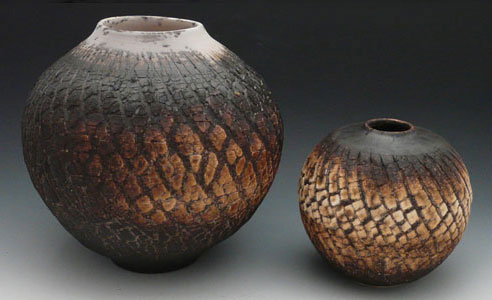Baltic Raku - Obvara... How Beautiful!!
Danna Ritter·February 05, 2021

Marcia Selsor’s Tips on Obvara Firing
Enhance the effects of an obvara firing by texturing the surface!
Marcia Selsor • August 12, 2020 • Read Comments (26)




 (0 votes, average: 0.00 out of 5)
(0 votes, average: 0.00 out of 5)You need to be a registered member to rate this.
The obvara firing process, which originated in Eastern Europe around the 12th Century, involves scalding the finish on the pottery to seal the porous surface. Similar to the raku pottery process, a bisqued pot is heated, in this case to 1650°F (899°C) and removed from the heat. The difference is that the pot is then dipped into a specific obvara yeast mixture before being dunked in water to rapidly cool the piece. The effects are quite stunning.
In this post, an excerpt from her video Raku Firing: Expanding the Potential of the Raku Kiln, Marcia Selsor shows how to enhance the effects of an obvara firing by texturing the surface and then shows the exciting process. – Jennifer Poellot Harnetty, editor.

